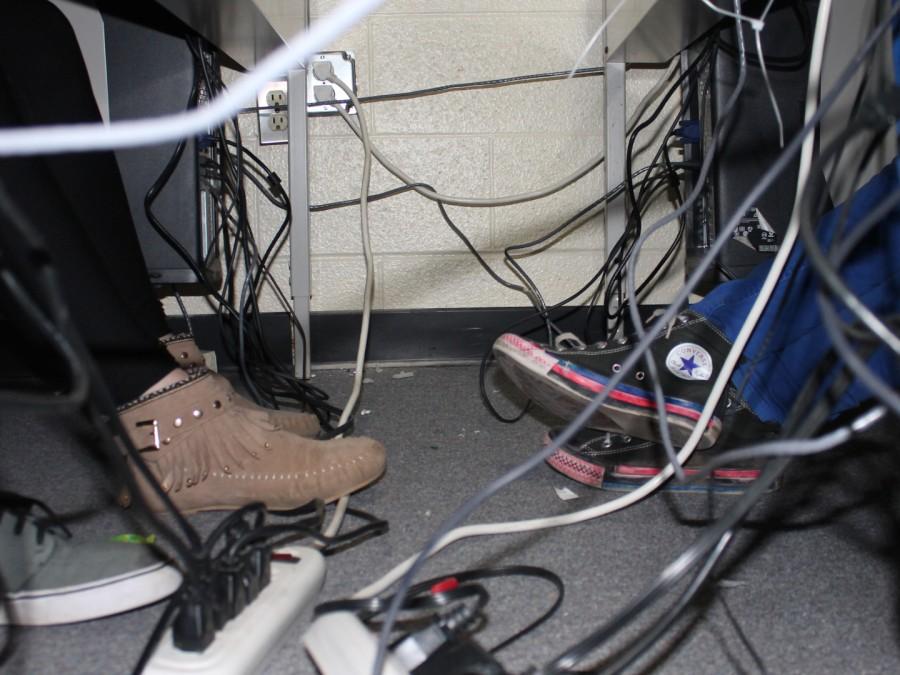Technology, the struggle is real
Getting school work done is very important to students, and for that to be possible in today’s world, technology plays a leading role. Edutopia research analyst Vanessa Vega urges that for students “technology offers opportunities to be more actively involved in the learning experience.”
“The aging infrastructure is the overall issue,” said technology director, Jim Kelly. “Our equipment is old and worn down. Not just the computers themselves but our switches, plugs and everything else that has to do with technology.”
A bond proposal that would ultimately change the look of Stockbridge schools, including a new gym and technology upgrades, was voted down by 64 votes in 2014. If it would have been passed, a total of $1.5 million would of been allotted: $500,000 to student devices, $500,000 to teacher tools and $500,000 to help the infrastructure.
At the high school, principal Richard Cook spent one hundred percent of his SAEF discretionary fund, and $2,000 on the eighth and ninth grade robotics class last year. Cook has a $500 annual budget for repairing or replacing instructional technology equipment. Many people who hear that might think that is low number; however, it is pretty average according to Kelly. There are schools in the state that only have one computer per class.
For the robotics program at the high school to do the research needed for their trip to their project in Palau, students are constantly using technology.
On a scale of 1 to 10, robotics teacher Robert Richards gave technology a “zero.”
“The lack of planning and the lack of leadership over the past ten years has allowed our technology to really just suck [sic],” robotics teacher, Robert Richards said. “There’s no way I could run the robotics program using the school technology. If it wasn’t for the fundraising and the efforts of the students there is no way we could pull off what we do,” Richards added.
While Cook agreed, he pointed out that he used an $8,000 grant on the Innovative Vehicle Design course from the ISD that could have been used for any course related to STEM. He decided to spend it on the vehicle design course in the robotics program.
“They could not do what they do without outside support, but that is not to say that they don’t get support from the school as well,” said Cook. All told, the district spends $267,000 on technology-related expenses, that may be unseen to the public in costs like salaries, travel expenses, equipment replacement, and services in all buildings.

I received an invitation to join the newspaper in my ninth grade year around scheduling time. This opportunity led to an experience I never even thought...



